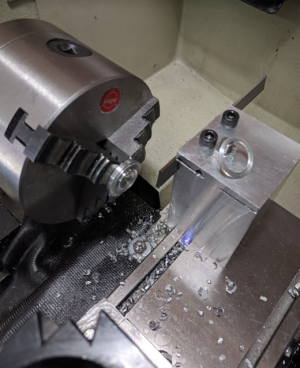@ttabbal thanks for posting a close up pic. That's an interesting design- simple too just a 2x2 block of aluminum with a single hole at the top that threads into the T-nut at the bottom?
Pretty much. There is a through hole for the t-nut, I just used a piece of threaded rod with a nut and washer on the top to hold it to the carriage. There are two smaller holes toward the blade that are threaded under the slot and clearance above to tighten the blade. I believe I used 1/4-20, mostly because I already had a tap and bolts that size.


